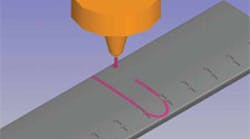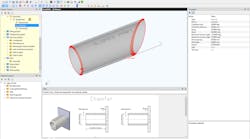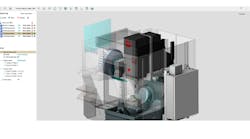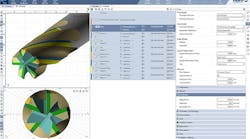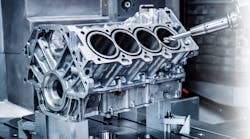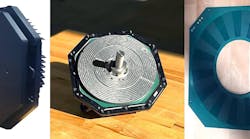When it comes to producing prosthetic components that will be worn by humans, comfort and fit are essential.
Fillauer, of Chattanooga, Tenn. (www.fillauer.com) makes many different parts for medical use, and they know that fit, comfort, and appearance of the parts they make, make them more attractive and more usable.
A new product the company had planned could be programmed for 4-axis machining, but the shape of the family of carbon fiber parts meant that programming time was going to be long. So Stephen Moffitt, R&D programmer, looked for a better way.
“We have some fairly complicated three dimensional parts for which we had to incorporate 4-axis simultaneous machining. Our FeatureCAM 3D was capable, but Matt Beisel, of FeatureCAM talked to me about the FeatureCAM 3D Five Axis as an upgrade for the task we had. The more I heard about it the more it sounded like a solution,” Moffitt said.
“Right off the bat, I saw that it could save me about 75 percent in my programming time. I could have programmed these to be machined with 4th axis indexing style of machining, piecing together machine moves to accomplish a complete part — machine a little bit here, rotate the fixture, machine a little bit there. But with five-axis simultaneous, the tool comes down, and it doesn’t leave the part until the part is machined complete,” Moffitt said. That saves Fillauer programming and machining time.
Moffitt is running the parts on a Haas VF-3 vertical machining center with a 4th axis rotary. Ten parts are held in a long fixture mounted to the rotary table. As it turns, four-axis machining takes place.
Feature-based machining divides part designs into features, such as holes, slots, pockets and bosses. FeatureCAM incorporates Automatic Feature Recognition technology that automatically identifies the features within the part and makes the system exceptionally easy to learn and quick to use.
For each feature on a part, FeatureCAM selects the most suitable tools, calculates feeds and speeds, generates tool paths and produces NC code in a single automated operation.
FeatureCAM includes support for continuous five-axis machining through better and easier control of stock remaining, a large tool database with options to link pre-defined feeds and speeds to individual tools and speed-ups, and a wide range of postprocessors.
The five-axis machining package provides a number of methods for controlling the tool axis.
Moffitt said he can set a specific lead and/or lean angle to access areas that cannot be reached with three-axis machining or to give better cutting conditions.
Another capability of FeatureCAM reduces the chance of programming issues by providing simulations on screen and gouge protection so Moffitt can avoid any problems before the program is loaded into the machine.
“One of the key features for us is the five axis trimming command. I can select a group of surfaces, and the tool will follow the edges of those surfaces with continuity, which cuts much of my programming time for our parts.
“FeatureCAM’s five-axis trimming and swarf machining techniques are very effective for machining the edges of the carbon fiber parts. There is no tool pick-up, so the machining results are excellent, and this feature saves a lot of programming time,” Moffitt said.
“Using FeatureCAM’s 5-axis capabilities allowed us to hold the part so that we can machine these parts three dimensionally in one continuous path, saving us quite a bit of time and providing much better results. In a 3-axis machine, it would take eight or nine setups for some of these parts which we can now do in one,” Moffitt added.
Moffitt used other CAM software, but said he found FeatureCAM to be more user-friendly and more affordable, and easy to learn.
